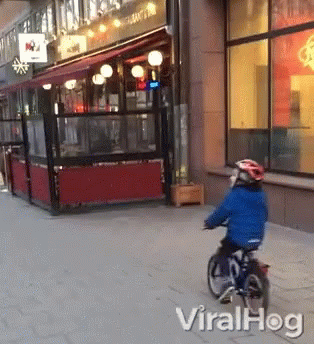Sprained Ankle? Recover Faster
75% of people who get an ankle injury will get one again. The number one predictor of a future injury is a previous injury. As healthcare providers, we need to be doing better than this. Be prepared for some physiology of injuries, a solution to manage acute injuries, and slight sarcasm (to keep things lighthearted). 
First we need to define a few words for those new to physiotherapy lingo. Acute Injury. To be clear, most of the time it is not A Cute Injury–it’s often the opposite.

The Definition of Acute Injury in this blog: “Acute injuries happen suddenly, such as when a person falls, receives a blow, or twists a joint.”
We will be talking about these types of injuries, specific to the ankle joint.
Physiology of an Acute Injury
What actually happens when we sprain our ankles?

When you get injured, your body goes through a series of steps to fix things up. First, blood vessels near the injury squeeze to minimize bleeding, and tiny cells called platelets form a plug to stop the blood flow. Then, there’s inflammation, where blood vessels widen, so healing cells come to the area. These clear debris and help prepare the area for healing. Next comes the repair phase, in which new tissues are built with the help of cells called fibroblasts, and the formation of temporary tissue with blood vessels. After that, the body remodels the new tissue, making it stronger and more functional. Finally, as things get back to normal, scar tissue forms.
Nerve Damage
When an ankle injury occurs, nerve damage may happen (1, 2).
Nerves should be like the Fast Flash.

When an ankle injury happens and the nerve is damaged, we get the other, Slow Flash.

Electrical stimulation emerges as a promising intervention for individuals with peripheral nerve injuries, common in acute ankle injuries. Such injuries often result in motor and sensory impairment, impacting daily life and hindering functional recovery. Clinical studies suggest that individualized electrical stimulation therapy during rehabilitation plays a significant role in promoting axon growth, accelerating sensorimotor recovery, and reducing muscle atrophy. Getting Slow Flash back to Fast Flash.
Myostatin = muscle loss

You may be asking yourself, Why is there a picture of a very muscular cow? Great question–glad you asked!
This cow is lacking myostatin. What is myostatin? It causes muscles to stop growing.
How does this relate to an acute ankle injury? Wonderful question!
When we have an acute injury, myostatin is elevated, leading to muscle loss in the injured leg. This may be one of the reasons someone who has a previous injury has a high chance of getting the same injury again.
How can we counteract this in the clinic? Glad you asked–read below for our solution!
Current Method
Focused on the short-term function.
A. R.I.C.E. Method
The widely adopted R.I.C.E. (Rest, Ice, Compression, Elevation) method has been a go-to for years, but its limitations are becoming increasingly evident. While it provides initial relief, its one-size-fits-all approach lacks personalization and may not address the unique needs of each patient. 75 out of 100 people who sprain their ankle will do it again. We need to do something better. We believe we have a solution.
B. Shortcomings and Limitations
The drawbacks of the R.I.C.E. method include its failure to consider individual variations, potentially leading to delayed recovery and persistent issues. There’s a growing recognition of the need for a more personalized and comprehensive strategy in acute ankle sprain care.
C. Need for Personalization
To truly address the complexities of ankle sprains, a shift towards a more personalized and comprehensive strategy is essential. Recognizing the inadequacies of the current approach sets the stage for exploring a new care method.
A Functional Approach

Focused on long-term function.
A. Initial Assessment by a Physiotherapist within 0-48 hours of injury
- Professional evaluation is paramount for an accurate diagnosis.
- Addressing individual patient needs ensures a tailored and effective treatment plan.
- Rule out need for x-ray or complete ligament tear.
B. Early Ankle Mobilization, Neuromuscular and Strengthening Exercises
- Promoting early movement proves beneficial for improved healing.
- Reducing stiffness and enhancing range of motion are key components of this early mobilization strategy.
C. Use of Electrical Stimulation At Home (FireFly)
- Leveraging electrical stimulation boosts microcirculation, facilitating healing.
- Mechanical muscle pumping becomes a tool for better recovery, addressing the root of the injury.
D. Blood Flow Restriction (BFR)
- Stop myostain from causing muscle loss with a few BFR sessions.
- Benefits include accelerated recovery without subjecting the patient to excessive strain.
E. Follow-up Visit After 6-8 Weeks
- Monitoring progress is vital to identify any movement discrepancies and adjust the treatment plan accordingly.
- Providing patient-specific movement and strengthening exercises ensures a holistic and sustained recovery.
 In summary, recurrent ankle injuries demand a personalized approach beyond R.I.C.E. We advocate for early mobilization, targeted exercises, and innovative methods like electrical stimulation and blood flow restriction. By understanding acute injury physiology, we can move past temporary relief to promote lasting function. We can do better than just R.I.C.E. and adopt a proactive, individualized strategy for more effective ankle injury care. Injury prevention starts today.
In summary, recurrent ankle injuries demand a personalized approach beyond R.I.C.E. We advocate for early mobilization, targeted exercises, and innovative methods like electrical stimulation and blood flow restriction. By understanding acute injury physiology, we can move past temporary relief to promote lasting function. We can do better than just R.I.C.E. and adopt a proactive, individualized strategy for more effective ankle injury care. Injury prevention starts today.



